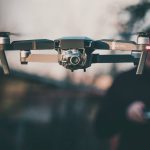
Printing, sublimation and transfer paper – sublimation as a chemical reaction means a direct transition of a chemical compound from a solid to a gaseous state, bypassing the liquid state. The reverse reaction to sublimation is resublimation. The sublimation process was first described in the 12th century, i.e. in the deep Middle Ages.
In the following years and centuries, this process was widely used in more or less advanced laboratories. This chemical reaction is used both in chemical laboratories and industry to purify chemical compounds or to extract iodine, anthracene or camphor from them, a good example of a sublimation body is dry ice – a solid version of carbon dioxide.
- https://www.opal.net.pl/poprawianie-wygladu-ust/
- https://www.hotelpergamin.pl/maszyny-rolnicze-i-wszystko-co-powinnismy-wiedziec-na-ich-temat/
- https://www.art4web.biz.pl/jak-polozyc-plytki-drewnopodobne-w-malej-lazience/
Sublimation in printing
Printing is one of those fields that uses the sublimation process. She created a modern duplication technique called sublimation printing. This method is used primarily for printing on objects and clothes. In printing, therefore, sublimation is dyeing made with the use of specialized sublimation paints on transfer paper, and the tool for implementation is the printer.
Sublimation printing is used on various types of fabrics, although polyester or at least a fabric with an admixture of this substance works best. Thanks to it, the dye particles used in the printing process penetrate deeper into the fabric, which means that it retains all its qualities much longer and is resistant to the mechanical and chemical effects of various substances.
The addition of polyester also makes the colors much more intense and exhausts the entire scale of shades introduced during printing. The color of the substrate is of great importance for the sublimation printing effect, and white is the best color here, as it allows for the best contrasts and shades of the dye.
Clothes with your own print, i.e. sublimation in printing
To deepen the knowledge about sublimation printing, it is best to follow the ongoing process divided into several stages. The first one is to select and then print the selected illustration or text that will eventually be placed on the base of our t-shirt or mug.
The image is printed using special sublimation paints on paper called transfer. At this stage, it is of great importance to properly prepare the image for printing, especially when we are dealing with raster graphics, countless small dots – pixels. In this case, you should pay special attention to the correct resolution of the selected image.
This means that the output material must be of good quality, and it will be affected by excessive scaling, significant enlargement of the illustration, which will extract pixels from the smooth surface.
Sublimation printing on transfer paper is, as you can easily guess, an intermediate stage of the whole process. When it is finished, i.e. the selected image is already transferred to the paper, the final stage takes place, which consists in placing the transfer paper in a device called a thermal transfer press, which presses the paper to the substrate on which the image is to be applied, and it does not matter whether they are printed sportswear or printed mugs or any other gadget.
The press necessary for printing uses the phenomenon of sublimation, i.e. a direct transition from a solid to a gaseous state, bypassing the liquid state. Dye particles of sublimation paint applied to the transfer paper under the pressure of the device and the high temperature used in the process, penetrate in the form of gas into the structure of the substrate.
The resulting pattern on the fabric blends in and hardens mechanically into its structure. The values of pressure and temperature are selected each time depending on the nature of the substrate. Usually it is a temperature in the range of 180-200 degrees Celsius and a pressure time of up to 60 seconds.
The importance of transfer paper in the sublimation printing process
A good transfer paper must optimally absorb the ink and work with the printer. There are many types of printing materials available on the market. It can be blank paper, but it can be already printed material or one that will allow for additional decoration of the printed surface, called thermal transfer.
Clean transfer paper works well on hard surfaces such as cups, boards or furniture. Its advantage is the ability to accurately reproduce colors on the substrate, even in hard-to-reach places. Printed paper, on the other hand, has a mirror image, which facilitates the task when we want to put numbers or signs on the substrate.
The sublimation printing technique works especially well for marketing purposes. Although due to its low cost, it is available to everyone. Obtaining a T-shirt with a personalized print is a great idea for a surprising gift or for your own commemorative purposes. It’s also great fun, especially at the stage of choosing the image to be applied to the substrate.
Mugs with the imprint of favorite places visited during the honeymoon or just trips, stay for a long time and remind you of nice moments.







